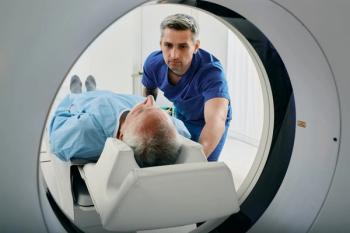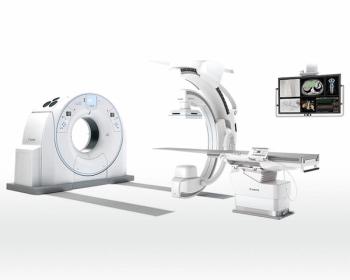
First versions target on-call teleradiology, referring physicians
First versions target on-call teleradiology, referring physiciansEastman Kodak has joined the ranks of a growing number of PACS vendors moving their products to the Windows NT platform. The film and PACS giant has released several Windows
First versions target on-call teleradiology, referring physicians
Eastman Kodak has joined the ranks of a growing number of PACS vendors moving their products to the Windows NT platform. The film and PACS giant has released several Windows NT-based workstations, the first arrivals in a new family of Digital Science products to be based on the Microsoft operating system.
Kodak decided to add Windows NT-based workstations to its product line due to increased customer interest in and familiarity with the platform, as well as the growing utility of the operating system in workstation environments. The new workstations will complement the company's current Unix-based viewing station line, which will be continued, said Lawrence White, product line manager in the company's Dallas-based Kodak Medical Imaging Systems unit.
Available as combined hardware/software packages or as software-only offerings, the NT workstations are targeted at on-call teleradiology and physician-review applications. In addition to these versions, the Rochester, NY-based company also plans to show a Windows NT-based diagnostic workstation at the 1997 Radiological Society of North America meeting.
The new workstations are based on the Windows NT-based Radworks 2.1 software from PACS firm Applicare Medical Imaging, a Kodak OEM partner based in the Netherlands. Kodak engineers worked with Applicare to help define feature sets for the Digital Science workstations, White said.
Designed primarily for on-call teleradiology to physicians' homes, HX1000 supports resolutions of 800 x 600 up to 1280 x 1024. With HX1000, users can view DICOM images and manipulate images with features such as window/level and pan/zoom. The viewing station can also be equipped with an option that allows users to send images to another workstation or archive that qualifies as a DICOM storage service class provider. Support is provided for wide area network technologies such as dial-up phone, T1, and ISDN lines. HX1000 lists for $12,700, while the software-only version lists for $1500.
For more advanced teleradiology applications, Kodak has released GX800, a medical viewing station that also functions as a gateway by enabling image routing to other remote viewing stations on a WAN. GX800 also performs image compression and supports a number of compression schemes, including DICOM JPEG lossy and other proprietary algorithms. GX800 has a list price of $17,500, while the software-only version lists for $7200.
For non-diagnostic image review by clinicians, Kodak offers PX1001 and PX1002, which support one- and two-monitor configurations, respectively. PX1001 and PX1002 include the same features as the on-call teleradiology viewing station, but also have the capability to query and retrieve historical images as well. Like HX1000, PX1001 and PX1002 support resolutions ranging from 800 x 600 up to 1280 x 1024, which is the system's standard configuration. Users can also add a teleradiology module to send images to other workstations. PX1002 users can also print images to a DICOM- compliant printer or a desktop printer equipped with a Windows NT driver, White said.
PX1001 has a list price of $14,400, while PX1002 costs $20,600. A software-only version of PX1001, called PV1, is $3200, while a similar version of PX1002, called PV2, is $7000.
Newsletter
Stay at the forefront of radiology with the Diagnostic Imaging newsletter, delivering the latest news, clinical insights, and imaging advancements for today’s radiologists.



























